- A few years back, IoT was a new concept. But with each passing year, IoT technology has taken over the market and has made our lives easier and productive. From smart homes to smart cities, from smart agriculture to smart healthcare, every modern thing we use today is based on the fundamentals of IoT. Not to mention leading industries such as IBM, Amazon, Microsoft, etc. have already switched on to IoT applications after realizing the benefits it offers to organizations.
- Although IoT has become an indispensable part of almost any industry, still there are small-scale industries that are unsure about the huge value IoT offers to businesses and marketing. Here, IoT online training helps them to understand the technology and further assists them in all possible ways so that they can exhibit the technology in the workplace as well.
- It would not be wrong to say that there is no field left where IoT cannot be used, making it an even more popular and most in-demand application. There are more opportunities for businesses that are adopting IoT in their workspace. More importantly, since the IoT field is expanding, the demand for trained and certified IoT professionals is also increasing. Hence this is the apt time to enroll for an IoT placement course with one of the premier IoT online training in India.
- The IoT certification online course is designed to help you understand the most basic and advanced concepts in IoT.
IoT online training course curriculum is backed up by top industry experts to help you master the craft and establish yourself as a certified IoT professional and earn more from the beginning itself.
Learn all the IoT basics, IoT architecture, IoT decision framework, and a lot more.
With IoT online certification course, learn to configure raspberry Pi, know about programming sensors, actuators, and much more.
The IoT online training intends to teach you IoT networking protocols and how to design more powerful solutions.
With one of the leading IoT online training institute, acquire substantial knowledge about cloud or Azure IoT hub, and also learn how to demonstrate hub APIs in MS azure.
Also, learn to design end-to-end solutions using various IoT technologies and tools with the guidance of IoT online training in India.
Master data analytics techniques onto the collected data and use prediction algorithms to get meaningful insights from it.
- We at the Croma campus know that salary prospects and placement are important variables to look out for while planning to get trained in any course in general. As for the stats that you might be interested in, we’ve got you covered:
- As a major IoT online training company in India, we have crafted an online course to help you master the practical aspects of IoT deployment in the IT sector. Thus enrolling yourself at the IoT online placement course is a great investment considering the salary prospective.
A crude figure of about 50 billion devices will be driven on IoT tech by 2022.
IoT devices will have amassed a global market of 2 trillion by the end of 2022.
According to the survey platform Glassdoor, an IoT professional earns an average salary of $150K. Moreover, the figure is bound to go up as you gain experience in the field as an IoT professional.
- The exponential demand for IoT solutions is inevitable in the near future. Hence, it’s certainly a great investment to get yourself trained with the IoT online training program.
With more than 30 billion devices actively driven by IoT, the supply vs demand ratio is skewed towards the need for more IoT professionals in the field.
With the leading online IoT training course, add advanced IoT skills to your arsenal and augment your job prospects in the IT domain.
Get assured placement assistance. Moreover, build a stunning resume and advance your career in the IT industry.
- IoT ecosystem is rapidly expanding with more and more businesses and organizations are depending on it for making better business decisions. We are using a wide array of products like desktops, laptops, smartphones, wrist bands, etc. to drive meaningful insights from the data collected by IoT devices. Sensors, vehicles, and many other devices are also growing at a rapid pace.
- Some of the advantages of IoT include:
- According to a survey, more than 50 billion devices are interconnected in 2020 using IoT services. Researchers have predicted that in the upcoming years due to the increasing usage of IoT, there will be an increase in demand for IoT skilled professionals. Hence it will be wise on your part to register for the IoT online training and secure your future job opportunities.
IoT helps in saving millions of dollars by reducing energy consumption and its enhanced energy efficiency.
It also helps in achieving customer satisfaction through logistic and operation management.
Since IoT is making lives easier and smarter, there will be a huge demand for IoT professionals making the future of IoT is bright.
- IoT online training covers certain job roles and responsibilities as a part of the program that you might need to implement in the workplace. They are
- With one of the most renowned IoT online training in India, learn to manage all the job roles and responsibilities with ease and further help the company serves better.
You should acquire in-depth knowledge about basic and advanced concepts of IoT.
You must be well aware of IoT basics, IoT architecture, IoT decision framework, and more.
You need to be well-versed in configuring raspberry Pi and know about programming sensors, actuators, and a lot more.
You need to have some functional idea about cloud or Azure IoT hub, and how to demonstrate hub APIs in MS azure.
You must have in-depth idea of IoT networking protocols and thereby learn how to design more powerful solutions.
You should be able to perform data analytics techniques on to the data collected and procure meaningful insights from it by using prediction algorithms.
- Since IoT has helped enterprises to work in a better way, there are many companies that are on the lookout for IoT skilled professionals. Some of the top-notch industries hiring IoT experts are Honeywell, Intel, Amdocs, Microsoft, and IBM, etc. According to Cisco, there are more than 50 million devices that are working on IoT and shortly the number will rise to billions.
- The use of IoT technology has found its niche in almost every field, ranging from the healthcare sector, aviation, logistics, IT to everywhere, and thus has opened opportunities for job seekers who want to get into the IoT domain. It has been predicted to be the next best thing in the IT industry. Even more, reasons to enroll yourself in the IoT online training program!
- The IoT online training in India program has been meticulously designed to help you master all the key concepts with ease. It covers a wide range of topics, from IoT applications to physical layer protocol and other standard IoT frameworks included. The primary focus being to be able to deploy powerful IoT solutions on-demand in real-world scenarios.
- Related Courses to IoT Online Training
Why should you learn the Internet of Things?
By registering here, I agree to Croma Campus Terms & Conditions and Privacy Policy
 Course Duration
Course Duration
30 Hrs.Flexible Batches For You
14-Dec-2024*
- Weekend
- SAT - SUN
- Mor | Aft | Eve - Slot
16-Dec-2024*
- Weekday
- MON - FRI
- Mor | Aft | Eve - Slot
18-Dec-2024*
- Weekday
- MON - FRI
- Mor | Aft | Eve - Slot
14-Dec-2024*
- Weekend
- SAT - SUN
- Mor | Aft | Eve - Slot
16-Dec-2024*
- Weekday
- MON - FRI
- Mor | Aft | Eve - Slot
18-Dec-2024*
- Weekday
- MON - FRI
- Mor | Aft | Eve - Slot
Want To Know More About
This Course
Program fees are indicative only* Know more
Timings Doesn't Suit You ?
We can set up a batch at your convenient time.
Program Core Credentials
Trainer Profiles
Industry Experts
Trained Students
10000+
Success Ratio
100%
Corporate Training
For India & Abroad
Job Assistance
100%
Batch Request
FOR QUERIES, FEEDBACK OR ASSISTANCE
Contact Croma Campus Learner Support
Best of support with us
CURRICULUM & PROJECTS
Internet of Things (IoT) Certification Training
- In this program you will learn:
Internet of Things (IoT) Introduction
IoT Architecture
Understanding IoT Ecosystems
Raspberry Pi
IoT Gateways
Cloud Platforms for IoT
IoT Implementations [Applications]
Future & Security Concerns
- Internet of Things (IoT) Introduction
Background and Development
Three waves of Internet
Why IoT
Market Analysis & Investment In IoT
Industrial & Consumer IoT
M2M communication and automation history
Relation with embedded systems
General introduction to Arduino , Raspberry Pi and SmartWifi boards
- IoT Architecture
How IoT Works
High level Data Flow in IoT
Technical Architecture
Description of all layers of IoT Architecture
Technologies for IoT
- Understanding IoT Ecosystems
What is IoT application
What are basic elements / building blocks of IoT app
How are these blocks connected together
The systematic method to design IoT application
Architecting our hands-on project
- Raspberry Pi
Learning fundamentals of Raspberry Pi
Different types of pi boards.
Installation of OS in Raspberry Pi
Programming Raspberry Pi Using Python
- Python Introduction
Numbers, List, Tuple & dictionaries
If else statements
Loop & Control Statements
File Handling
Understanding Functions
Raspberry Pi Programming
Interfacing Sensors with Raspberry Pi
- IoT Gateways
Introduction to IoT Gateway
ESP8266 Module as Wi-Fi Gateway
Learning AT Commands of ESP8266
Programming on ESP8266 Wi-Fi Module
- Cloud Platforms for IoT
Introduction to Cloud
It’s different models of Cloud
Overview different IoT cloud platforms
How to get Access to Cloud Platforms
Sending Data to IoT Cloud Platform
Sending Creating Alerts Using Cloud Platform
Developing IoT Prototype
- IoT Implementations [Applications]
Cities
Home
Agriculture
Healthcare Industry
Transportation
Environment
Infrastructure
Security
- Future & Security Concerns
Future Scope
Challenges
Security
- Data Analysis and Visualization using Pandas.
- Statistics
Categorical Data
Numerical Data
Mean
Median
Mode
Outliers
Range
Interquartile range
Correlation
Standard Deviation
Variance
Box plot
- Pandas
Read data from Excel File using Pandas More Plotting, Date Time Indexing and writing to les
How to get record specic records Using Pandas Adding & Resetting Columns, Mapping with function
Using the Excel File class to read multiple sheets More Mapping, Filling Nonvalue’s
Exploring the Data Plotting, Correlations, and Histograms
Getting statistical information about the data Analysis Concepts, Handle the None Values
Reading les with no header and skipping records Cumulative Sums and Value Counts, Ranking etc
Reading a subset of columns Data Maintenance, Adding/Removing Cols and Rows
Applying formulas on the columns Basic Grouping, Concepts of Aggre gate Function
Complete Understanding of Pivot Table Data Slicing using iLoc and Loc property (Setting Indices)
Under sting the Properties of Pivot Table in Pandas Advanced Reading CSVs/HTML, Binning, Categorical Data
Exporting the results to Excel Joins:
Python | Pandas Data Frame Inner Join
Under sting the properties of Data Frame Left Join (Left Outer Join)
Indexing and Selecting Data with Pandas Right Join (Right Outer Join)
Pandas | Merging, Joining and Concatenating Full Join (Full Outer Join)
Pandas | Find Missing Data and Fill and Drop NA Appending Data Frame and Data
Pandas | How to Group Data How to apply Lambda / Function on Data Frame
Other Very Useful concepts of Pandas in Python Data Time Property in Pandas (More and More)
- Data Analysis and Visualization using NumPy and MatPlotLib
- NumPy
Introduction to NumPy: Numerical Python
Importing NumPy and Its Properties
NumPy Arrays
Creating an Array from a CSV
Operations an Array from a CSV
Operations with NumPy Arrays
Two-Dimensional Array
Selecting Elements from 1-D Array
Selecting Elements from 2-D Array
Logical Operation with Arrays
Indexing NumPy elements using conditionals
NumPy’s Mean and Axis
NumPy’s Mode, Median and Sum Function
NumPy’s Sort Function and More
- MatPlotLib
Bar Chart using Python MatPlotLib
Column Chart using Python MatPlotLib
Pie Chart using Python MatPlotLib
Area Chart using Python MatPlotLib
Scatter Plot Chart using Python MatPlotLib
Play with Charts Properties Using MatPlotLib
Export the Chart as Image
Understanding plt. subplots () notation
Legend Alignment of Chart using MatPlotLib
Create Charts as Image
Other Useful Properties of Charts.
Complete Understanding of Histograms
Plotting Different Charts, Labels, and Labels Alignment etc.
- Introduction to Data Visualization with Seaborn
- Introduction to Seaborn
Introduction to Seaborn
Making a scatter plot with lists
Making a count plot with a list
Using Pandas with seaborn
Tidy vs Untidy data
Making a count plot with a Dataframe
Adding a third variable with hue
Hue and scattera plots
Hue and count plots
- Visualizing Two Quantitative Variables
Introduction to relational plots and subplots
Creating subplots with col and row
Customizing scatters plots
Changing the size of scatter plot points
Changing the style of scatter plot points
Introduction to line plots
Interpreting line plots
Visualizing standard deviation with line plots
Plotting subgroups in line plots
- Visualizing a Categorical and a Quantitative Variable
Current plots and bar plots
Count plots
Bar plot with percentages
Customizing bar plots
Box plots
Create and interpret a box plot
Omitting outliers
Adjusting the whisk
Point plots
Customizing points plots
Point plot with subgroups
- Customizing Seaborn Plots
Changing plot style and colour
Changing style and palette
Changing the scale
Using a custom palette
Adding titles and labels: Part 1
Face Grids vs. Axes Subplots
Adding a title to a face Grid object
Adding title and labels: Part 2
Adding a title and axis labels
Rotating x-tics labels
Putting it all together
Box plot with subgroups
Bar plot with subgroups and subplots
Well done! What’s next
- SQL Server Fundamentals
SQL Server 2019 Installation
Service Accounts & Use, Authentication Modes & Usage, Instance Congurations
SQL Server Features & Purpose
Using Management Studio (SSMS)
Conguration Tools & SQLCMD
Conventions & Collation
- SQL Server 2019 Database Design
SQL Database Architecture
Database Creation using GUI
Database Creation using T-SQL scripts
DB Design using Files and File Groups
File locations and Size parameters
Database Structure modications
- SQL Tables in MS SQL Server
SQL Server Database Tables
Table creation using T-SQL Scripts
Naming Conventions for Columns
Single Row and Multi-Row Inserts
Table Aliases
Column Aliases & Usage
Table creation using Schemas
Basic INSERT
UPDATE
DELETE
SELECT queries and Schemas
Use of WHERE, IN and BETWEEN
Variants of SELECT statement
ORDER BY
GROUPING
HAVING
ROWCOUNT and CUBE Functions
- Data Validation and Constraints
Table creation using Constraints
NULL and IDENTITY properties
UNIQUE KEY Constraint and NOT NULL
PRIMARY KEY Constraint & Usage
CHECK and DEFAULT Constraints
Naming Composite Primary Keys
Disabling Constraints & Other Options
- Views and Row Data Security
Benets of Views in SQL Database
Views on Tables and Views
SCHEMA BINDING and ENCRYPTION
Issues with Views and ALTER TABLE
Common System Views and Metadata
Common Dynamic Management views
Working with JOINS inside views
- Indexes and Query tuning
Need for Indexes & Usage
Indexing Table & View Columns
Index SCAN and SEEK
INCLUDED Indexes & Usage
Materializing Views (storage level)
Composite Indexed Columns & Keys
Indexes and Table Constraints
Primary Keys & Non-Clustered Indexes
- Stored Procedures and Benets
Why to use Stored Procedures
Types of Stored Procedures
Use of Variables and parameters
SCHEMABINDING and ENCRYPTION
INPUT and OUTPUT parameters
System level Stored Procedures
Dynamic SQL and parameterization
- System functions and Usage
Scalar Valued Functions
Types of Table Valued Functions
SCHEMABINDING and ENCRYPTION
System Functions and usage
Date Functions
Time Functions
String and Operational Functions
ROW_COUNT
GROUPING Functions
- Triggers, cursors, memory limitations
Why to use Triggers
DML Triggers and Performance impact
INSERTED and DELETED memory tables
Data Audit operations & Sampling
Database Triggers and Server Triggers
Bulk Operations with Triggers
- Cursors and Memory Limitations
Cursor declaration and Life cycle
STATIC
DYNAMIC
SCROLL Cursors
FORWARD_ONLY and LOCAL Cursors
KEYSET Cursors with Complex SPs
- Transactions Management
ACID Properties and Scope
EXPLICIT Transaction types
IMPLICIT Transactions and options
AUTOCOMMIT Transaction and usage
SAVEPOINT and Query Blocking
- Introduction to Data Science
What is Analytics & Data Science
Common Terms in Data Science
What is data
Classication of data
Relevance in industry and need of the hour
Types of problems and business objectives in various industries
How leading companies are harnessing the power of analytics
Critical success drivers.
Overview of Data Science tools & their popularity.
Data Science Methodology & problem-solving framework.
List of steps in Data Science projects
Identify the most appropriate solution design for the given problem statement
Project plan for Data Science project & key milestones based on effort estimates
Build Resource plan for Data Science project
Why Python for data science
- Accessing/Importing and Exporting Data
Importing Data from various sources (Csv, txt, excel, access etc)
Database Input (Connecting to database)
Viewing Data objects - sub setting, methods
Exporting Data to various formats
Important python modules: Pandas
- Data Manipulation: Cleansing - Munging Using Python Modules
Cleansing Data with Python
Filling missing values using lambda function and concept of Skewness.
Data Manipulation steps (Sorting, ltering, duplicates, merging, append ing, sub setting, derived variables, sampling, Data type conversions, renaming, formatting.
Normalizing data
- Feature Engineering in Data Science
Feature Engineering
Feature Selection
Feature scaling using Standard Scaler/Min-Max scaler/Robust Scaler.
Label encoding/one hot encoding
- Data Analysis: Visualization Using Python
Introduction exploratory data analysis
Descriptive statistics, Frequency Tables and summarization
Univariate Analysis (Distribution of data & Graphical Analysis)
Bivariate Analysis (Cross Tabs, Distributions & Relationships, Graphical Analysis)
Creating Graphs- Bar/pie/line chart/histogram/ boxplot/ scatter/ densi ty etc.)
Important Packages for Exploratory Analysis (NumPy Arrays, Matplotlib, seaborn, Pandas etc.)
- Introduction to Statistics
Descriptive Statistics
Sample vs Population Statistics
Random variables
Probability distribution functions
Expected value
Normal distribution
Gaussian distribution
Z-score
Spread and Dispersion
Correlation and Co-variance
- Introduction to Predictive Modelling
Concept of model in analytics and how it is used
Common terminology used in Analytics & Modelling process
Popular Modelling algorithms
Types of Business problems - Mapping of Techniques
Different Phases of Predictive Modelling
- EDA (Exploratory Data Analysis)
Need for structured exploratory data
EDA framework for exploring the data and identifying any problems with the data (Data Audit Report)
Identify missing data
Identify outliers’ data
Imbalanced Data Techniques
- Data Pre-Processing & Data Mining
Data Preparation
Feature Engineering
Feature Scaling
Datasets
Dimensionality Reduction
Anomaly Detection
Parameter Estimation
Data and Knowledge
Selected Applications in Data Mining
- Introduction to Machine Learning
Machine Learning
Machine Learning Algorithms
Algorithmic models of Learning
Applications of Machine Learning
Large Scale Machine Learning
Computational Learning theory
- Techniques of Machine Learning
Supervised Learning
Unsupervised Learning
Semi-supervised and Reinforcement Learning
Bias and variance Trade-off
Representation Learning
- Regression
Regression and its Types
Logistic Regression
Linear Regression
Polynomial Regression
- Classication
Meaning and Types of Classication
Probability and Bayes Theorem
Support Vector Machines
Naive Bayes
Decision Tree Classier
Random Forest Classier
- Introduction to Deep Learning
What are the Limitations of Machine Learning
What is Deep Learning
Advantage of Deep Learning over Machine learning
Reasons to go for Deep Learning
Real-Life use cases of Deep Learning
- Deep Learning Networks
What is Deep Learning Networks
Why Deep Learning Networks
How Deep Learning Works
Feature Extraction
Working of Deep Network
Training using Backpropagation
Variants of Gradient Descent
- Introduction to Power BI
Overview of BI concepts
Why we need BI
Introduction to SSBI
SSBI Tools
Why Power BI
What is Power BI
Building Blocks of Power BI
Getting started with Power BI Desktop
Get Power BI Tools
Introduction to Tools and Terminology
Dashboard in Minutes
Interacting with your Dashboards
Sharing Dashboards and Reports
- Power BI Desktop
Power BI Desktop
Extracting data from various sources
Workspaces in Power BI
- Power BI Data Transformation
Data Transformation
Query Editor
Connecting Power BI Desktop to our Data Sources
Editing Rows
Understanding Append Queries
Editing Columns
Replacing Values
Formatting Data
Pivoting and Unpivoting Columns
Splitting Columns
Creating a New Group for our Queries
Introducing the Star Schema
Duplicating and Referencing Queries
Creating the Dimension Tables
Entering Data Manually
Merging Queries
Finishing the Dimension Table
Introducing the another DimensionTable
Creating an Index Column
Duplicating Columns and Extracting Information
Creating Conditional Columns
Creating the FACT Table
Performing Basic Mathematical Operations
Improving Performance and Loading Data into the Data Model
- Modelling with Power BI
Introduction to Modelling
Modelling Data
Manage Data Relationship
Optimize Data Models
Cardinality and Cross Filtering
Default Summarization & Sort by
Creating Calculated Columns
Creating Measures & Quick Measures
- Data Analysis Expressions (DAX)
- Date and Time
- Time Intelligence
- Information
- Logical
- Mathematical
- Statistical
- Text and Aggregate
What is DAX
Data Types in DAX
Calculation Types
Syntax, Functions, Context Options
DAX Functions
Measures in DAX
Measures and Calculated Columns
ROW Context and Filter Context in DAX
Operators in DAX - Real-time Usage
Quick Measures in DAX - Auto validations
In-Memory Processing: DAX Performance
- Power BI Desktop Visualisations
How to use Visual in Power BI
What Are Custom Visuals
Creating Visualisations and Colour Formatting
Setting Sort Order
Scatter & Bubble Charts & Play Axis
Tooltips and Slicers, Timeline Slicers & Sync Slicers
Cross Filtering and Highlighting
Visual, Page and Report Level Filters
Drill Down/Up
Hierarchies and Reference/Constant Lines
Tables, Matrices & Conditional Formatting
KPI's, Cards & Gauges
Map Visualizations
Custom Visuals
Managing and Arranging
Drill through and Custom Report Themes
Grouping and Binning and Selection Pane, Bookmarks & Buttons
Data Binding and Power BI Report Server
- Introduction to Power BI Dashboard and Data Insights
Why Dashboard and Dashboard vs Reports
Creating Dashboards
Conguring a Dashboard: Dashboard Tiles, Pinning Tiles
Power BI Q&A
Quick Insights in Power BI
- Direct Connectivity
Custom Data Gateways
Exploring live connections to data with Power BI
Connecting directly to SQL Server
Connectivity with CSV & Text Files
Excel with Power BI: Connect Excel to Power BI, Power BI Publisher for Excel
Content packs
Update content packs
- Publishing and Sharing
Introduction and Sharing Options Overview
Publish from Power BI Desktop and Publish to Web
Share Dashboard with Power BI Service
Workspaces (Power BI Pro) and Content Packs (Power BI Pro)
Print or Save as PDF and Row Level Security (Power BI Pro)
Export Data from a Visualization
Export to PowerPoint and Sharing Options Summary
- Refreshing Datasets
Understanding Data Refresh
Personal Gateway (Power BI Pro and 64-bit Windows)
Replacing a Dataset and Troubleshooting Refreshing
- Introduction to Data Preparation using Tableau Prep
Data Visualization
Business Intelligence tools
Introduction to Tableau
Tableau Architecture
Tableau Server Architecture
VizQL Fundamentals
Introduction to Tableau Prep
Tableau Prep Builder User Interface
Data Preparation techniques using Tableau Prep Builder tool
- Data Connection with Tableau Desktop
Features of Tableau Desktop
Connect to data from File and Database
Types of Connections
Joins and Unions
Data Blending
Tableau Desktop User Interface
- Basic Visual Analytics
Visual Analytics
Basic Charts: Bar Chart, Line Chart, and Pie Chart
Hierarchies
Data Granularity
Highlighting
Sorting
Filtering
Grouping
Sets
- Calculations in Tableau
Types of Calculations
Built-in Functions (Number, String, Date, Logical and Aggregate)
Operators and Syntax Conventions
Table Calculations
Level of Detail (LOD) Calculations
Using R within Tableau for Calculations
- Advanced Visual Analytics
Parameters
Tool tips
Trend lines
Reference lines
Forecasting
Clustering
- Level of Detail (LOD) Expressions in Tableau
Count Customer by Order
Profit per Business Day
Comparative Sales
Profit Vs Target
Finding the second order date
Cohort Analysis
- Geographic Visualizations in Tableau
Introduction to Geographic Visualizations
Manually assigning Geographical Locations
Types of Maps
Spatial Files
Custom Geocoding
Polygon Maps
Web Map Services
Background Images
- Advanced charts in Tableau
Box and Whisker’s Plot
Bullet Chart
Bar in Bar Chart
Gantt Chart
Waterfall Chart
Pareto Chart
Control Chart
Funnel Chart
Bump Chart
Step and Jump Lines
Word Cloud
Donut Chart
- Dashboards and Stories
Introduction to Dashboards
The Dashboard Interface
Dashboard Objects
Building a Dashboard
Dashboard Layouts and Formatting
Interactive Dashboards with actions
Designing Dashboards for devices
Story Points
- Get Industry Ready
Tableau Tips and Tricks
Choosing the right type of Chart
Format Style
Data Visualization best practices
- Exploring Tableau Online
Publishing Workbooks to Tableau Online
Interacting with Content on Tableau Online
Data Management through Tableau Catalog
AI-Powered features in Tableau Online (Ask Data and Explain Data)
Understand Scheduling
Managing Permissions on Tableau Online
Data Security with Filters in Tableau Online
- Placement Guide
Tips to clear an Interview
Common Interview questions and answers
Tableau Interview Questions and Answers
Resume Building Guide
Attempt for the related Global Certification Exam
Earn Credentials and Start applying for Jobs
- Introduction to Cloud Computing
- A Short history
- Client Server Computing Concepts
- Challenges with Distributed Computing
- Introduction to Cloud Computing
- Why Cloud Computing
- Benefits of Cloud Computing
In this module, you will learn what Cloud Computing is and what are the different models of Cloud Computing along with the key differentiators of different models. We will also introduce you to virtual world of AWS along with AWS key vocabulary, services and concepts.
- Amazon EC2 and Amazon EBS
- Amazon EC2
- EC2 Pricing
- EC2 Type
- Installation of Web server and manage like (Apache/ Nginx)
- Amazon EBS
- Demo of AMI Creation
- Backup, Restore
- Exercise
- Mock
- Hands on both Linux and Windows
In this module, you will learn about the introduction to compute offering from AWS called EC2. We will cover different instance types and Amazon AMIs. A demo on launching an AWS EC2 instance, connect with an instance and host ing a website on AWS EC2 instance. We will also cover EBS storage Architecture (AWS persistent storage) and the concepts of AMI and snapshots.
- Amazon Storage Services S3 (Simple Storage Services)
- Versioning
- Static website
- Policy
- Permission
- Cross region Replication
- AWS-CLI
- Mount Point with S3
- Life cycle
- Classes of Storage
- AWS CloudFront
- Real scenario Practical
- Hands-on all above
In this module, you will learn how AWS provides various kinds of scalable storage services. In this module, we will cover different storage services like S3, Glacier, Versioning, and learn how to host a static website on AWS.
- Cloud Watch & SNS
- Amazon Cloud Watch
- SNS - Simple Notification Services
- SQS
- Cloud Watch with Agent
- Cloud Watch with System Manager
In this module, you will learn how to monitoring AWS resources and setting up alerts and notifications for AWS resources and AWS usage billing with AWS CloudWatch and SNS.
- Scaling and Load Distribution in AWS
- Amazon Auto Scaling
- Auto scaling policy with real scenario based
- Type of Load Balancer
- Path Based load balancer
- Hands on with scenario based
- Routing policy on Load balancer
In this module, you will learn about 'Scaling' and 'Load distribution techniques' in AWS. This module also includes a demo of Load distribution & Scaling your resources horizontally based on time or activity.
- AWS VPC
- Amazon VPC with subnets
- Gateways
- Route Tables
- Subnet
- Cross region Peering
- Endpoint Creation with VPC
In this module, you will learn introduction to Amazon Virtual Private Cloud. We will cover how you can make public and private subnet with AWS VPC. A demo on creating VPC. We will also cover overview of AWS Route 53.
- Identity and Access Management Techniques (IAM)
- add users to groups,
- manage passwords,
- log in with IAM-created users.
In this module, you will learn how to achieve distribution of access control with AWS using IAM.
Amazon IAM
User
Group
Role
Policy
- Amazon Relational Database Service (RDS)
- Amazon RDS
- Type of RDS
- RDS Failover
- RDS Subnet
- RDS Migration
- Dynamo DB (No SQL DB)
- Redshift Cluster
- SQL workbench
- JDBC / ODBC
In this module, you will learn how to manage relational database service of AWS called RDS.
- Multiple AWS Services and Managing the Resources' Lifecycle
- Cloud Trail,
- SQS
In this module, you will get an overview of multiple AWS services. We will talk about how do you manage life cycle of AWS resources and follow the DevOps model in AWS. We will also talk about notification and email service of AWS along with Content Distribution Service in this module.
- AWS Architecture and Design
- AWS Backup and DR Setup
- AWS High Availability Design
- AWS Best Practices (Cost +Security)
- AWS Calculator & Consolidated Billing
In this module, you will cover various architecture and design aspects of AWS. We will also cover the cost planning and optimization techniques along with AWS security best practices, High Availability (HA) and Disaster Recovery (DR) in AWS.
- Migrating to Cloud & AWS
- Migration to Cloud
- Migration to AWS
- Step by step process
In this module, you will learn how to migrate to cloud
- Router S3 DNS
Public DNS
Private DNS
Routing policy
Records
Register DNS
Work with third party DNS as well
- Cloud Formation
Stack
Templet
Json / Ymal
- Elastic Beanstalk
- EFS / NFS (hands-on practice)
- Hands-on practice on various Topics
- Comprehensive hands-on with Dockers & Kubernetes Components
- Docker & Kubernetes Architecture & Components and installation
- Get introduced to deploy stateful and stateless apps on the cluster
- Learn how to expose the app outside the cluster and to auto scale apps
- Expertise learning with use cases of Containers and Docker
- Installation of Linux
- Configuration
- Manage
- Installation of app on Linux (apache / Nginx etc)
- AWS cli configuration on Linux
- Complete hands-on on Linux.
ECS, EKS (Kubernetes), Docker
- Linux
Python
Boto
DMS
System Manager
Mock
Interview preparation
Scenario based lab and practical
Each topic and services will be cover with lab and theory.
Security: KMS / SSM/ WAF
Storage: EFS, NFS, FSX, Storage Gateway
- These topics will be covered with this AWS course with real scenario based
- Describe Cloud Concepts
- Identify the benefits of cloud computing, such as High Availability,Scalability, Elasticity,
- Agility, and Disaster Recovery
- Identify the differences between Capital Expenditure (Cap Ex) and Operational.
- Expenditure (Op Ex)
- Describe the consumption-based model
- Describe the shared responsibility model
- Describe Infrastructure-as-a-Service (IaaS),
- Describe Platform-as-a-Service (PaaS)
- Describe server less computing
- Describe Software-as-a-Service (SaaS)
- Identify a service type based on a use case
- Define cloud computing
- Describe Public cloud
- Describe Private cloud
- Describe Hybrid cloud
- Compare and contrast the three types of cloud computing Describe Core Azure Services
Identify the benefits and considerations of using cloud services Cloud Computing Basics.
Describe the differences between categories of cloud services
Describe the differences between types of cloud computing
- Describe Core Azure Services
- Describe the benefits and usage of Regions and Region Pairs
- Describe the benefits and usage of Availability Zones
- Describe the benefits and usage of Resource Groups
- Describe the benefits and usage of Subscriptions
- Describe the benefits and usage of Management Groups
- Describe the benefits and usage of Azure Resource Manager
- Explain Azure resources
- Describe the benefits and usage of Virtual Machines, Azure App Services, Azure Container Instances (ACI), Azure Kubernetes Service (AKS), and Azure Virtual Desktop.
- Describe the benefits and usage of Virtual Networks, VPN Gateway, Virtual Network peering, and ExpressRoute
- Describe the benefits and usage of Container (Blob) Storage, Disk Storage,File Storage, and storage tiers
- Describe the benefits and usage of Cosmos DB, Azure SQL Database, Azure Database for MySQL, Azure Database for PostgreSQL, and SQL Managed Instance.
- Describe the benefits and usage of Azure Marketplace
Describe the core Azure architectural components
Describe core resources available in Azure
- Describe core solutions and management tools on Azure
- Describe the benefits and usage of Internet of Things (IoT) Hub, IoT Central, and Azure Sphere
- Describe the benefits and usage of Azure Synapse Analytics, HDInsight, and Azure Data bricks
- Describe the benefits and usage of Azure Machine Learning, Cognitive Services and Azure Bot Service
- Describe the benefits and usage of server less computing solutions that include Azure Functions and Logic Apps
- Describe the benefits and usage of Azure DevOps, GitHub, GitHub Actions, and Azure Dev Test Labs
- Describe the functionality and usage of the Azure Portal, Azure PowerShell, Azure CLI, Cloud Shell, and Azure Mobile App
- Describe the functionality and usage of Azure Advisor
- Describe the functionality and usage of Azure Resource Manager (ARM) templates.
- Describe the functionality and usage of Azure Monitor
- Describe the functionality and usage of Azure Service Health
Describe core solutions available in Azure
Describe Azure management tools
- Describe general security and network security features
- Describe basic features of Azure Security Center, including policy compliance, security alerts, secure score, and resource hygiene.
- Describe the functionality and usage of Key Vault
- Describe the functionality and usage of Azure Sentinel
- Describe the functionality and usage of Azure Dedicated Hosts
- Describe the concept of defence in depth
- Describe the functionality and usage of Network Security Groups (NSG)
- Describe the functionality and usage of Azure Firewall
- Describe the functionality and usage of Azure DDoS protection
Describe Azure security features
Describe Azure network security
- Describe identity, governance, privacy, and compliance features
- Explain the difference between authentication and authorization
- Define Azure Active Directory
- Describe the functionality and usage of Azure Active Directory
- Describe the functionality and usage of Conditional Access, Multi-Factor Authentication
- MFA), and Single Sign-On (SSO)
- Describe the functionality and usage of Role-Based Access Control (RBAC)
- Describe the functionality and usage of resource locks
- Describe the functionality and usage of tags
- Describe the functionality and usage of Azure Policy
- Describe the functionality and usage of Azure Blueprints
- Describe the Cloud Adoption Framework for Azure
Describe core Azure identity services
Describe Azure governance features
Describe privacy and compliance resources
Describe the Microsoft core tenets of Security, Privacy, and Compliance
Describe the purpose of the Microsoft Privacy Statement, Online Services Terms (OST) and Data Protection Amendment (DPA)
Describe the purpose of the Trust Centre
Describe the purpose of the Azure compliance documentation
Describe the purpose of Azure Sovereign Regions (Azure Government cloud services and Azure China cloud services)
- Describe Azure cost anagement and Service Level Agreements
- Identify factors that can affect costs (resource types, services, locations,ingress and egress traffic)
- Identify factors that can reduce costs (reserved instances, reserved capacity,hybrid use benefit, spot pricing)
- Describe the functionality and usage of the Pricing calculator and the Total Cost of Ownership (TCO) calculator
- Describe the functionality and usage of Azure Cost Management
- Describe the purpose of an Azure Service Level Agreement (SLA)
- Identify actions that can impact an SLA (i.e. Availability Zones)
- Describe the service lifecycle in Azure (Public Preview and General Availability)
Describe methods for planning and managing costs
Describe Azure Service Level Agreements (SLAs) and service lifecycles
- Data Science Professionals - Live Projects
Managing credit card Risks
Bank Loan default classification
YouTube Viewers prediction
Super store Analytics (E-commerce)
Buying and selling cars prediction (like OLX process)
Advanced House price prediction
Analytics on HR decisions
Survival of the fittest
Twitter Analysis
Flight price prediction
+ More Lessons
Mock Interviews
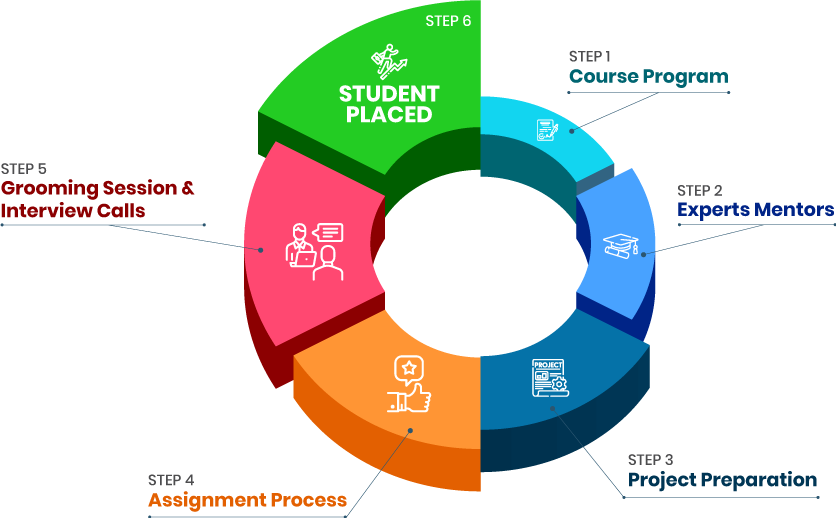
Projects
Phone (For Voice Call):
+91-971 152 6942WhatsApp (For Call & Chat):
+918287060032SELF ASSESSMENT
Learn, Grow & Test your skill with Online Assessment Exam to
achieve your Certification Goals
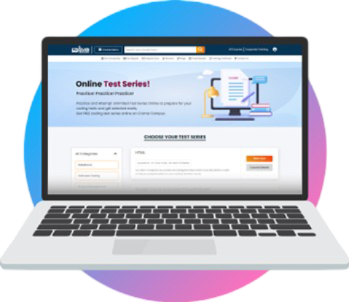
FAQ's
IoT training helps out students in going through the architecture of IoT networks, covering sensors for devices & analysis.
Due to the booming demand for IoT Online Training in India, the Croma Campus offers the best ways in which a beginner can master out concepts of IoT.
- Deep understanding of sensors.
- Emphasizing the user interface.
- Learning out JavaScript.
There are multiple features of IoT Online Training which we are going to consider in the below-mentioned pointers:
- Embedded software development.
- Data Management.
- Data Analytics.
No, as the brand is globally established so it offers both online & offline training to candidates.
- An ISO Certified.
- End-to-End support.
- Professionalized guidance.

- - Build an Impressive Resume
- - Get Tips from Trainer to Clear Interviews
- - Attend Mock-Up Interviews with Experts
- - Get Interviews & Get Hired
If yes, Register today and get impeccable Learning Solutions!

Training Features
Instructor-led Sessions
The most traditional way to learn with increased visibility,monitoring and control over learners with ease to learn at any time from internet-connected devices.
Real-life Case Studies
Case studies based on top industry frameworks help you to relate your learning with real-time based industry solutions.
Assignment
Adding the scope of improvement and fostering the analytical abilities and skills through the perfect piece of academic work.
Lifetime Access
Get Unlimited access of the course throughout the life providing the freedom to learn at your own pace.
24 x 7 Expert Support
With no limits to learn and in-depth vision from all-time available support to resolve all your queries related to the course.
Certification
Each certification associated with the program is affiliated with the top universities providing edge to gain epitome in the course.
Showcase your Course Completion Certificate to Recruiters
-
Training Certificate is Govern By 12 Global Associations.
-
Training Certificate is Powered by “Wipro DICE ID”
-
Training Certificate is Powered by "Verifiable Skill Credentials"




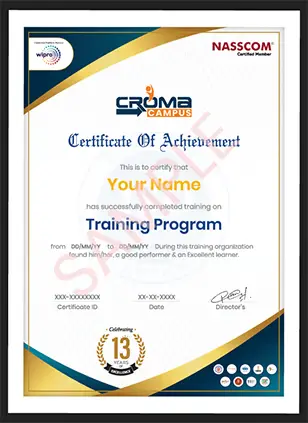
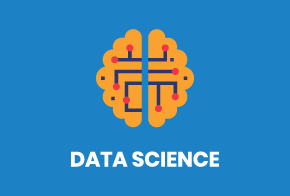
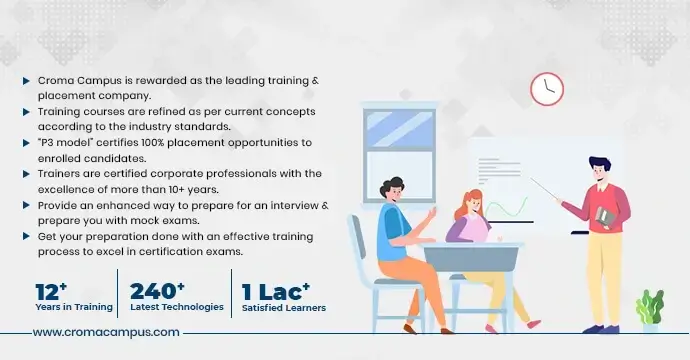

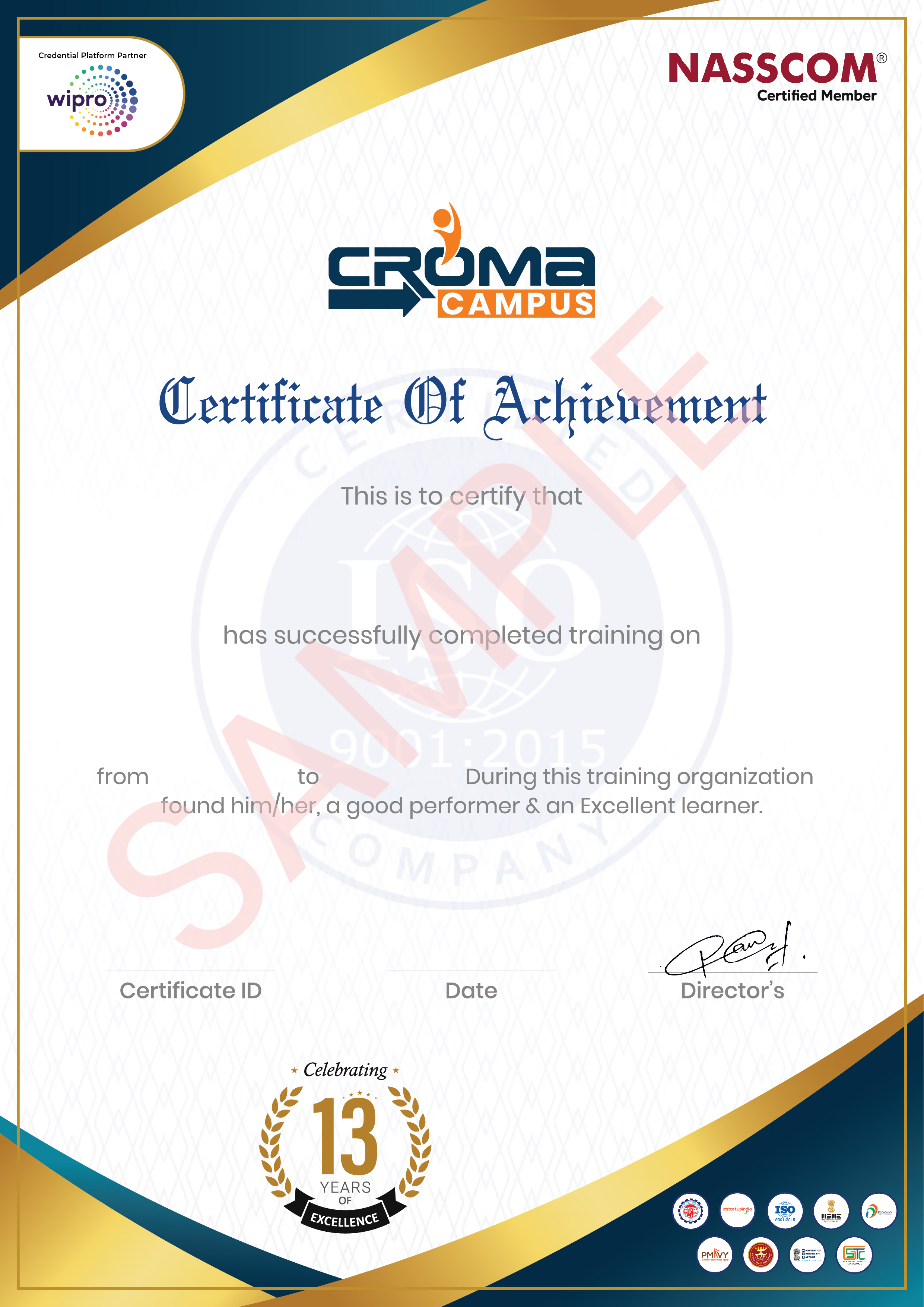
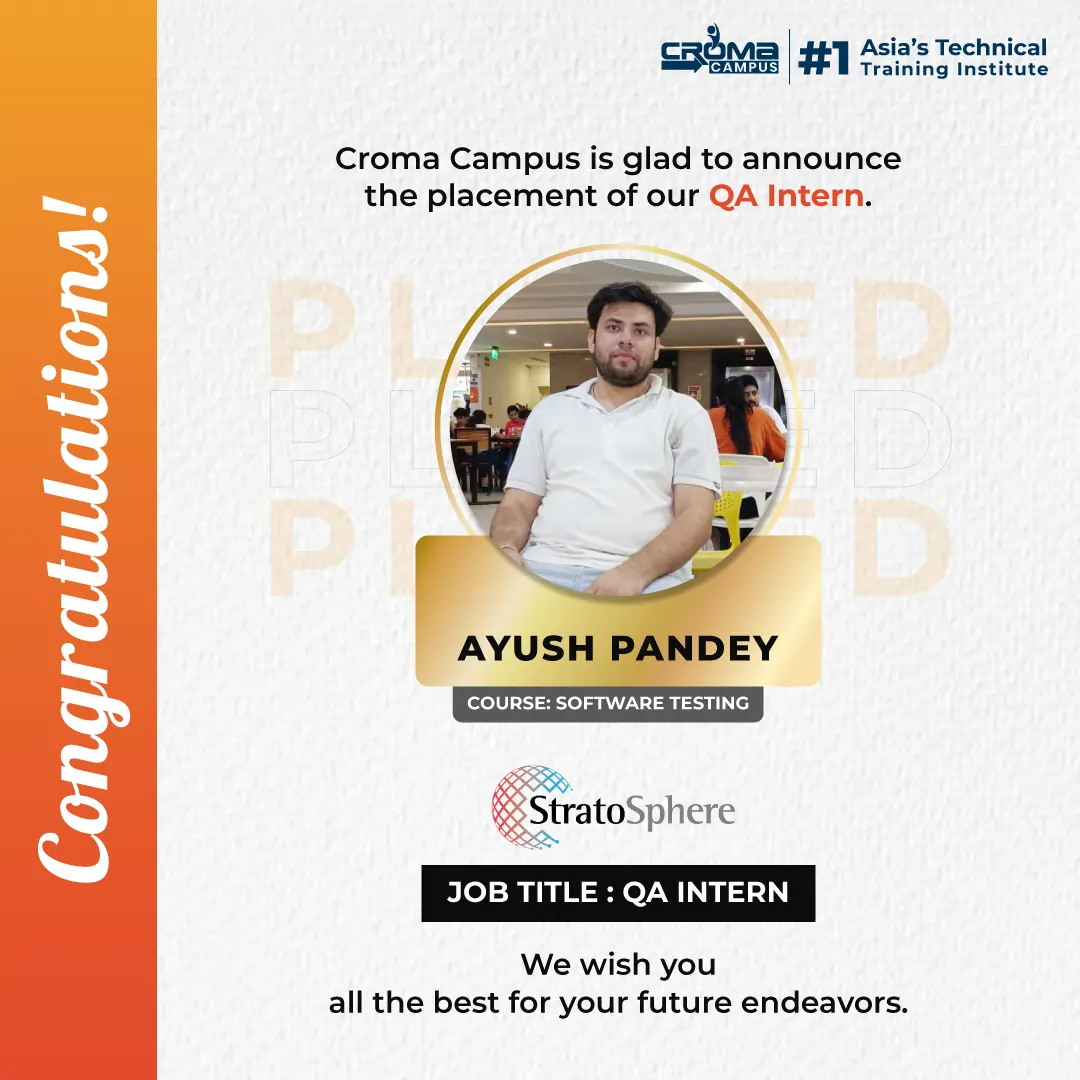








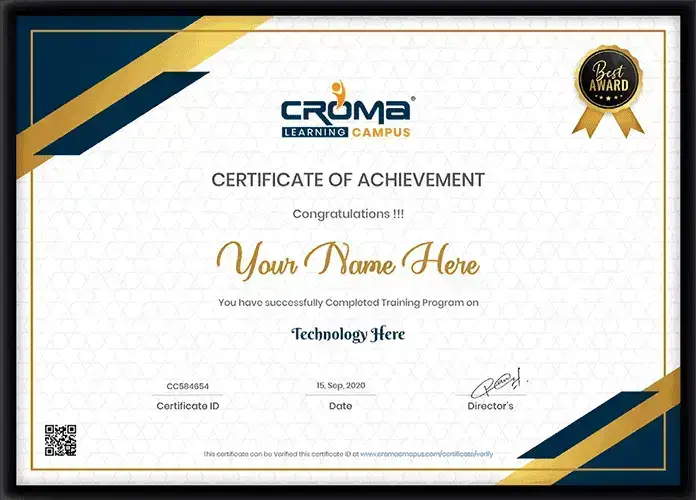


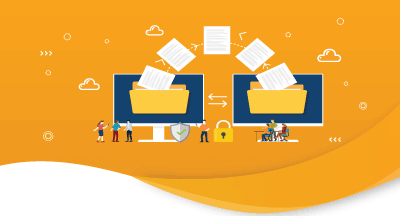









 Master in Cloud Computing Training
Master in Cloud Computing Training